IPF Webinar on Population Control and Women
IPF Webinar on Population Control and Women
Total Views |
IPF Webinar
on
Population Control and Women
July 31, 2021
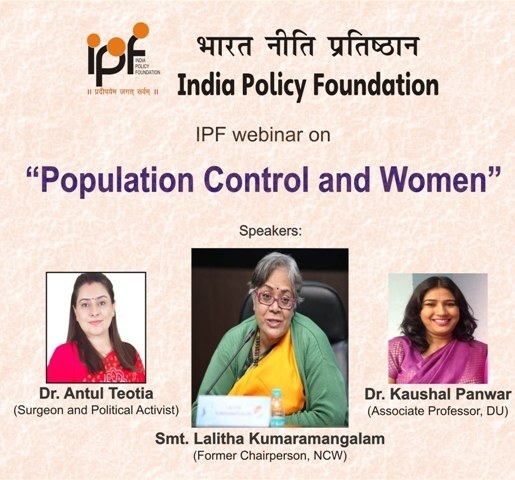
Webinar Speakers:
Smt. Lalitha Kumaramangalam (Former Chairperson, NCW)
Dr. Antul Teotia (Surgeon and Political Activist)
Dr. Kaushal Panwar (Associate Professor, DU)
Moderator:
Dr Kuldeep Ratnoo, Director, India Policy Foundation

Dr Kuldeep Ratnoo:
I welcome everyone to this webinar on Population Control and Women. In recent times, there has been a lot of discussion and debate on population control. States like Uttar Pradesh have come out with laws on population control and there have been many voices that are for and against this. Before this, we have seen how forced sterilization during Emergency had met with opposition from people. But China learnt from the mistakes of Indiain implementing population control measures and effectively implemented its One Child Policy.
In India, the discourse on population control is mostly controlled by men, and women have very little say. Though women are in government and policy making fields, but their numbers are still much less than desirable. In today's webinar, we will discuss the issue of population control from women's perspective.
Today we have with us Smt Lalitha Kumaramangalm to share her views. Lalithaji is the former chairperson of the National Commission for Women. Her hard work, perseverance and dedication for women empowerment are commendable. She has always been involved in women's issues for a very long time and she is the best person to give us an overview of today’s topic.
Smt Lalitha Kumaramangalam
Namaskar !! Thank you very much Kuldeep Ratnooji for inviting me! Before I proceed, I want to state that I am not going to talk about politics at all. I have found that in any sort of developmental work, politics often comes in, and we lose our sense of perspective and it becomes only about politics and not the work. I found this most often when it has to do anything with women because it is a very divided field and we find that sometimes we lose track of what actually the issue is.
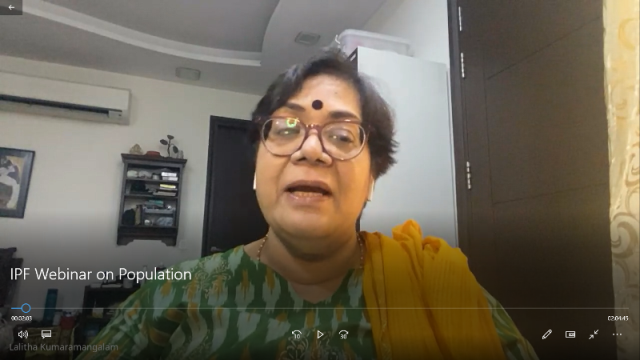
Let me start by giving a simple background. When you talk about women, you are talking about roughly half the population of the world. Most women have very similar circumstances in which they live throughout the world. Most people assume that because India is a so-called backward country, women here are worse off etc. But believe me it is not the truth. I have travelled to about 27-28 countries in the world, and in every single country except perhaps in one or two, which don’t include the United States, Japan or Australia, poor women or disadvantaged women or women with less education or less access to social resources have very similar lives. They face very similar barriers; they are treated very much the same way by perhaps not all governments but a large part of the governance system and socio-culturally they are in a very similar place. Also, when we talk about women, we must understand that we don’t talk about women in isolation. Women are part of every country’s population. Women are part of the over population that the world has. As human beings, we all share the same resources whether it is natural resources, whether it is economic resources etc.
Now, natural resources as we know are limited. If we look at data, we can see what the population was hundred years ago and what it is today. Whether it is with reference only to India, or with reference to the so-called developed countries or the whole world.You will find that we have grown by almost ten times more than what we were a century ago, if not more. And given that, we have very limited resources, there is a need for population planning. Because many other issues impact sizes of families, therefore nowadays it called population control. One of the most important needs for any country where population is well below replacement level (which is two to be ideal as it means that a man and woman can have two children and the population will remain static) is that fact that every country has a finite amount of land that we live on.
If we take the case of India, we are already 1.38 billion people. In about, less than 10 years, we will already overtake China and we are expected to have 1.56 billion people. When we look at our borders, we can see that on one side, we have China which is always trying to encroach on our land. The pressure on land is enormous, it is in fact too much. It has created many conflicts, not just between countries, but between man and all other natural resources – whether it is water, animals, food or even the seas. The sheer number of people has become economically and socially unviable for the country. Of course, politics also is a large part of it but as I said before, I don’t want to bring politics into it. The politics of religion, economies and the politics of many things. The politics of culture itself often blurs boundaries today that I feel we should look at or stay within.
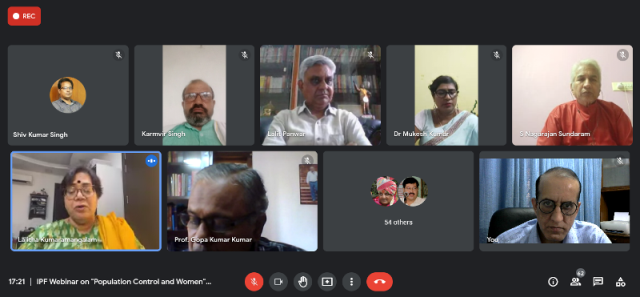
There are pros and cons for a population policy. The Indian government and as we know, the Assam chief minister has already announced that he will bring in a population policy in Assam. There has been a huge outcry, both for and against it. The Indian government could be looking at some sort of population policy which could be mostly about incentives and disincentives. But when we talk about population policy, we need to understand two things –1) Yes, most population planners are men. But in any policy that concerns a family, both men and women have to be on board. It is not that we need more women in a panel that is deciding it or a committee is going to be set up. You need voices from both sides. 2) You also need to understand that India is such a vast country that existing socio-cultural and religious differences cannot be ignored when any policy is being made. Family is very personal to everybody regardless of religion or economic and social differences. It is very difficult for most people to accept that a third entity, in this case, the government – state or centre – will bring in certain rules. The fact is that it is a psychological disadvantage that could put any government very often on the mat. It may bring up problems for them. If you look at data, you will find that in better educated sections of society, generally, this is not a blanket fact at all, sizes of families are constricting. That is educated youngsters or couples will have smaller families or lesser children than people who come from less educated, less advantaged or from economically and socially disadvantaged sections.
There are three ways of looking at a population policy – 1) where you say it is voluntary, 2) where you offer incentives and disincentives and 3) where you bring in a law saying that if you have so many children, you will not get a government job or you will not get a ration cardor some other way of offering a disincentive etc. This also means that we have to look at both short-term and long-term effects. The Government of India or the state governments will have to take on board the fact that we will have to look at the population policy in two ways –in the short-term, perhaps disincentives or less voluntary tools, for want of a better word, will have to be brought in. But in the long-term, one of the most important factors that has been shown throughout the world to lessen the size of families and lessen the number of children that couples have is education – both men and women. I have worked for too long in the women’s field, and I often hear that women do not need the opinionor support of men. It is not true. Any family is made up of both men and women, both good and bad, and you have to take both sides into consideration. However strong the disincentives maybe, ultimately those will succeed if an individual or a couple feels that it will benefit them in some manner or their people can get something out of it. Which is where the whole incentives versus disincentives argument itself begins.
When we talk about family planning, let us look at the impact it has on women. There are pros and cons. Let me start with the cons. Given the fact that even today we don’t live in an equal world, there is rich vs. poor, there is educated vs. less educated etc. There are gender issues that come up and there are many other issues on the table. It is always the haves versus the have-nots. Generally, those women are slowly catching up throughout the country. Men are better educated than women. Men have more social and financial opportunities that are available to them. I am not going to go into the good and bad of this. I am just presenting facts. But many young women are very aware of this fact. This is a country that is looking to build their lives. The youngsters in this country have access to social media. In many ways, social media has been a great equaliser, irrespective of the risks involved. This is an aspirational India that we live in. Girls and women have as much aspirations as men. And every youngster today in India wants to have a better life. Even now, throughout the world, it is women on whom the burden of childcare falls. I am using the word “burden” deliberately because it is very time consuming and women often have to do it alone. For the few women who can afford to have care etc. for their children, that is a different picture and it is about less than 0.5 per cent of the Indian population as it stands today.
You will find that the obsession for having a male child in India even now is very pervasive, even in the cities. In one of the most well-known family planning surveys of India, The National Family Planning Survey of India, South Delhi was found to have the lowest sex ratio in the country. It is now a little better. But nonetheless, in South Delhi it is neither a poor nor an uneducated population that lives. So, we can’t jump to conclusions when it comes to a family planning policy and assume that one size fits all. Also, let us not forget the religious differences. We now have schisms between various religions. The fact that now you have religious leaders encouraging people to have more children. I am not going to go into whether this is good or bad. But the fact is that when younger girls are married off, when women have more children, than say one or two, the burden of childcare falls on these women.
When I was NCW Chairperson, the Government of India had brought in the new maternity leave rules where men are also given paternity leave and women gets six months. But the fact is that you don’t bring up a child within six months, it takes at least a decade before children have a fair degree of independence. And given the amount of pressure on children with regard to education etc., women do have much more problems than men when it comes to large families. Educated girls, and I say this again, are opting for smaller families, latemarriages etc. As you know there was a committee that was set up last year and they have given their report to the Ministry of Women and Child Welfare and NitiAayog etc. where it is recommended that the minimum age of marriage for girls should be changed from 18 to 21. That again is a contentious subject and I am not going into it. But one of the ways of decreasing the size of families is to increase the age of girls to get married.

Now in India, we know that it is women on whom the burden of most of the family work also falls especially in the less advantaged sections. Whether it is collection of water, cooking, cleaning up etc., it is women who do most of that work. It is often called drudgery because they are not paid for it and it is thankless work for most women. When you have more children, obviously that work is going to go up. The limited number of resources in any family will be distributed between more people than less. Also, the fact is that nutritionally when it comes to food, even now it is not considered wrong that women and the girls eat last. It has changed. I am not saying that this is the blanket rule throughout the country. I am not saying that it doesn’t exist in other countries. But it is a fact that nutritionally women often take the backseat. And larger the families, the less the women in those families will get to eat. A government especially given today's socio-economic environmental problems etc. will have to look at some form of family planning. It cannot be totally involuntary. Ideally, we have to take people on board, we have to look at the both short-term and long-term effects. We have tolook at cultural, social and religious differences. And we need to take all different types of stakeholders on board. Not just men and women. You have to take religious leaders, people who work in fertility and family planning etc. You have to look at the current laws that may affect family planning or size of the families. You have to look at how you can provide better education to both younger men and younger women. To teach them what it means to have a larger family versus a smaller family.
One of the most contentious things and let us not forget this, is religion which often plays a big part in planning the size of the family. Also, for many reasons, even today, there is a preference for sons. Even educated families, who are not from disadvantaged sections, have preference for sons. And I have learnt over the last 32 years to not ask many questions on these as they are very emotive and personal issues. And many people have many reasons for what they do. We need to understand the background on why such large families are there. The reasons for large families today are very different from the reasons that were there 500 years ago. But today, given the fact that the world is running out of resources, we have to start examining some sort of population control. I use the word “control” very deliberately because the control can be either imposed on us or we are taught the importance of a sustainable life, not just for our generation or a couple of generations after us but sustainable life on this planet. There is a reason why human beings are called the most destructive of all of nature’s products.

When I was working in the field of HIV AIDS, there were women who used to tell me that there is largely a skewed number of female versus male sex workers. The fact is more women live in poverty throughout the world than men do for many reasons. And not all of them have to do with population. But you will find that in larger families, normally it is the girls and the women who have less access or less than equal access to all the resources that may be available to the families especially education. In the short-term, one of the best things to do is to provide good quality education to the young girls and boys equally so that they have the choice to make. And in the long-term they will make the choice that is much more sustainable for life on earth.
Now, I have only given a very brief overall picture of the pros and cons. The pros are that a population policy will probably be able to give a lot of young girls the chance to delay family, delay having children, have less children, have access to more resources for their children and for their families and themselves. The cons are that in the long run, unless it is atleast semi voluntary, policies will falter and we will find it very difficult.It will also be difficult for any party that may bring in a coercive policy to politically survive. Also, people are smart enough to get around these policies not just in India but throughout the world. So, if we are going to be too coercive about any policy, the chances of the policy not succeeding or rebounding politically on a government are much higher than if we have a mix of both voluntary and a certain amount of incentives and disincentives may be offered to people who want to have smaller families. You will also be told that many states in India have hit below replacement level particularly Karnataka, Andhra Pradesh, Tamil Nadu and Kerala. But we cannot have one size fits all. Either a central policy will have to have the flexibility that states will be able to have their own subsidy policies, so to speak. States that have hit replacement levels will have other issues to address if they do not want to be part of the disincentive part that the Centre has made. However, any policy to do with family planning has to take both men and women on board. And I personally feel that younger men and women also need to be taken on board and not just people who are over the child bearing age. Younger people have a very different perspective on a lot of issues and I have found that it is wise to listen to them. Because they are the ones who are going to go forward and actually have families and they have very many different opportunities available to them from the introduction of the IT Revolution which has been called the Third Industrial Revolution and it has changed lives throughout the world. So, we need to have young voices, both men and women, in any policy planning before we actually come up with a population policy.
Thank you very much!
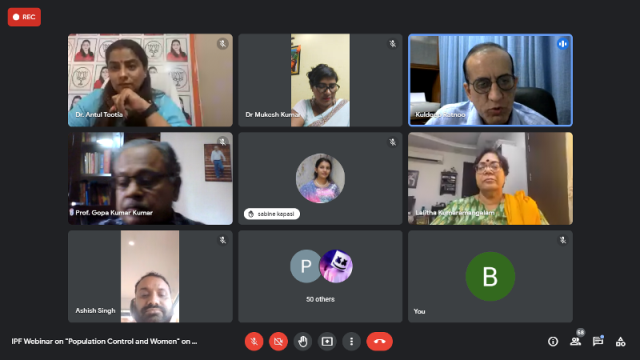
Dr Kuldeep Ratnoo:
Thank you so much Lalithaji for sharing your views. We also have with us Dr Antul Teotia. Dr Antul is a surgeon. She has studied medicine and is a practicing surgeon. She is also active in politics. Very recently, she was elected as the District Panchayat President of Bulandshahr, Uttar Pradesh. There have been various voices that were raised against the population control bill of Uttar Pradesh. They were of the opinion that there was no need to bring such a stringent measure as the population is already on the decline. You are a woman, a doctor and active in the politics of Uttar Pradesh. Today, we would like to know from you what is the need for such a measure and how will it benefit the people. And what are the challenges that such a law will have to face when it comes to Uttar Pradesh (UP).
Dr Antul Teotia:
Very warm good evening to everybody. It is a pleasure to see you all in the platform here.
If we talk only about UP, then yes, it is very necessary. But across the globe, we continue to suffer from gender inequality. Since ancient times, women have only been seen in the role of producing children. But in 1956, India started with the programme of planned parenthood. And it was very difficult to access the families in rural India. If you see in UP, most of the part is rural. We have only few big cities, which we can counton our fingers. So, I think whatever popular control measure that we are bringing in the state is very necessary. In UP we face a problem. Females are forced to marry at a very young age. And I feel that when they marry at a very young age, the number of years that a woman could have spent in education is spent in child bearing. As a doctor, I see that if a female is bearing a child for the third or fourth time, then there are a lot of complications which come with that. There are a lot of maternal health issues, post-partum depression etc.
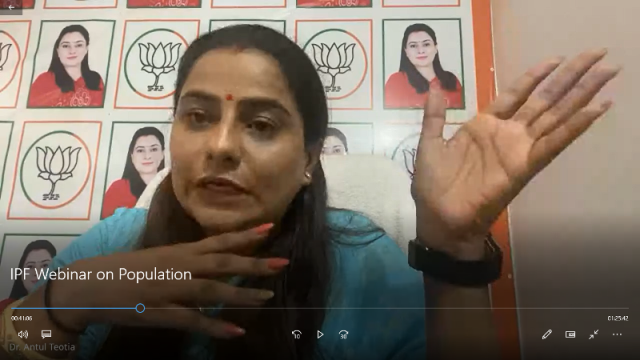
Also, according to the United Nations Population Fund, one in 30 women die everyday because of childbirth and while carrying a pregnancy. So, in UP we still have to go a long way on having girls educated and make them aware about population control. We need to provide sex education and work with females. We need to have females who are more open on talking about contraceptives in their families and in their offices. So, in UP it is very necessary to have population control measures.
Dr Kuldeep Ratnoo:
Thank you very much for your viewpoints and for highlighting the issues from a medical perspective, particularly women’s health issues.
Now I request Dr Kaushal Panwar. She is an Associate Professor of Sanskrit in Delhi University. She has worked very hard to reach this stage from a deprived background. I would like to request your views on the impact that poverty and big families have on women. What are the educational and employment opportunities for them? Does it decrease the nutritional budget for women? Even for fetching water, it is women who have to travel long distances. They have to do all the household work, take on the responsibilities of childcare and also go through mental and physical agony. In India, girls are still married off at a young age. Their bodies and mind are not yet developed and this puts added pressure on them. They don’t even have the confidence to take the responsibility of an entire family. You have observed all these issues at close quarters and you will be able to throw light on all these issues.
Dr Kaushal Panwar:
I would like to thank India Policy Foundation for inviting me to this webinar.
Before I go into the details, I would like to start my talk by agreeing with Dr Antul’s viewpoint. It is true that even now in our country, a number of women die during childbirth. There is a perception in society that it is very easy for women to give birth to children. And I would like to state that the most affected by this is the uneducated and poor section of society.
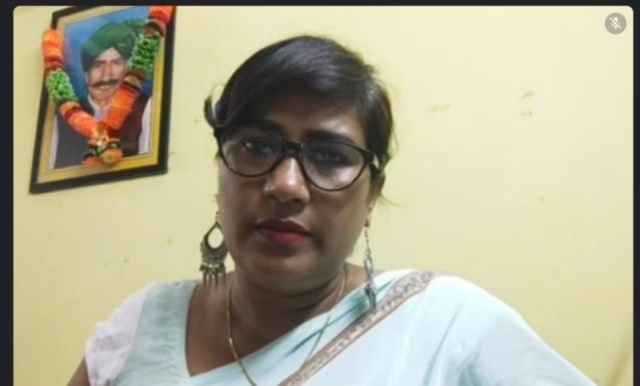
It is nature’s law that only women can bear a child because of which the most important responsibility falls on her. Why is it that we need a population control law? The reason for this is the lack of awareness. We have a deeply patriarchal society where the tradition says that only a male child can carry forward a family’s legacy. In the state of Haryana where I was born and grew up in, I have observed the condition of women very closely. There, I have seen women giving birth every year. Some children survive and some don’t. It is shocking when we realise in which century we all live in. It is the age of globalisation and people have even reached the moon. But a section of society is still stuck in the past. Even after independence, not much of development is seen in these sections. As an academician and as a citizen, I have seen in Haryana that if a woman dies during childbirth, then within a year, her sister is married off to that woman’s husband. Most of these deaths happen because enough attention is not given to the nutritional, emotionaland physical needs of a young mother. Tests are not done at the right time. The economic condition of the families also becomes a factor in the women not getting adequate and timely treatment. Even now, a major section of the Indian society has assimilated this in their behaviour.
As mentioned earlier, the second factor that leads to increase in population is the patriarchal society that we live inwhich wants a male child. If we take the case of North India, it is not just in the uneducated section but even in the educated section, we see that if a girl is born, they immediately plan for the next baby hoping it is a boy. And this cycle continues till a son is born. And in families that already have a son; they aim for another son as they think that it will give more strength to the family. These families are also under the impression that sons raise the social stature of family. This holds true even for economically disadvantaged families who do not have any property to divide amongst their sons. Even though there are laws that ensure property rights for girls, even now in many of the villages, girls are not given a share in properties. In cases when they get a share, it is almost always in the form of dowry and thepredominant sentiment that guides this action is the maintaining of status quo.
Considering all the factors that I have stated, a population control bill is of utmost importance not just in Uttar Pradesh but throughout the country. Only such a move can give women the respect and dignity that they deserve. It will help create a respectable place for women in society. Till the time there is not a law to enforce this, population control can never become a reality. Take the case of the law that has made the wearing of masks compulsory. It is only because of the fear of fines that people have started wearing masks. The same way if a woman delivers only girl child in her first and second pregnancies, she will not be forced to try for a third time due to fear of law. The narrative that such a law is targeted against just one community is baseless. We are talking about all sections of Indian society irrespective ofcaste, class and creed. If we want the country to be on the developmental path, it is necessary for us to control the rising population. For this, we need to create awareness about the issues I have pointed out.
Women are doing extremely well in all fields now. Take the case of Olympics where women have brought laurels to the country. I come from Jajjhar in Haryana where the sex ratio is skewed in favour of men. Yet women have been doing extremely well in wrestling and they are world champions. During this age of globalisation, it is clear that if you give opportunities to girls, then they even reach space. Let us not forget Haryana’s daughter KalpanaChawla who went to space. In the area where I come from, I am the sole woman who holds a doctorate. I am not just talking about the Dalitshere, I am talking about all sections.
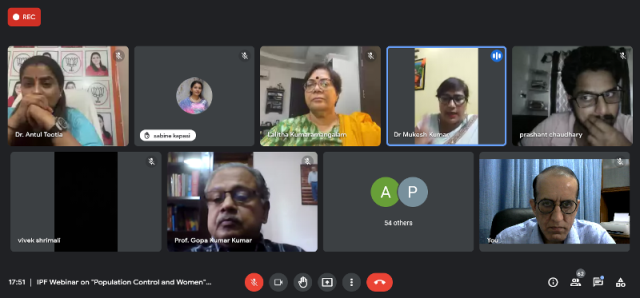
The Haryana government keeps raising the slogan, Betibachao, BetiPadhao. But the ratio of girl children continues to be low because of which there is also an increase in the crime rates. There are women who even now have to take the help of midwives for their delivery. There are a number of villages where women do not have access to the necessary injections and medicines that will ensure a safe and healthy pregnancy. To remedy this situation, what we need is not just political support. We need the NGOs, intellectuals and religious leaders to come out and support this cause.
The livelihoods of women are at stake. There is still a significant section that is not part of the job market. The 33 per cent reservation for women is still not implemented. Nobody wants to talk about this issue because our mindset is such that. When we implement population control law, it will empower women and significantly contribute to their physical well-being and increase their economic status.
When we talk about financial condition of women, it is necessary to understand that the majority of the household work is a woman’s responsibility. It is unpaid work with no privileges. Even the educated and financially independent women also have to bear the burden of housework and the responsibility of the families’ welfare is also put on these women. There is a need for a different type of discourse here.
It is important for the men to become sensitive to this issue. In our Indian culture, it is said that a family balances on two wheels – a man and a woman – and it is important for these two wheels to work in tandem for the family’s welfare. It is important for a man and woman to work together in all spheres. If we dismiss the role played by men in creating an equal society, then we are toppling the whole narrative and its purpose. We need to ask ourselves why is it that a woman is still expected to make tea for the whole family even when she comes home at the same time as her husband after work?It is necessary for everyone to contribute equally.
The burden of childcare still rests with women. In most families, women are expected to take care of the nutritional needs of the child. If the size of the families is restricted, then it will ensure equal access to resources for everyone in the family. Our girls are not less capable than anyone and they should be provided with equal opportunities. They need to be given a chance to prove themselves. We can see that any country that controlled its populationhas forged ahead. India is blessed with all resources yet the inequalities are increasing in society. The reason behind this is the unhindered population growth. I will conclude my talk with the words that the welfare society envisioned by Dr Ambedkar can be attained only if there is an open discussion on this topic.
Thank you!
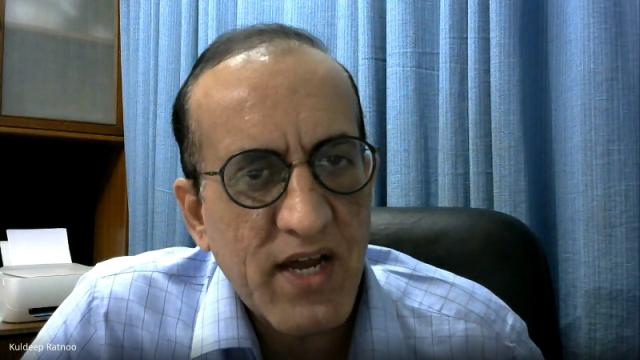
Dr Kuldeep Ratnoo:
Thank you for telling us the ground realities. Nobody can deny the truth that ours is still a patriarchal society. Women today are more empowered and as stated, it is important for us to give the male family members credit for encouraging women to make optimum use of the opportunities that were available. There is now an acceptance in Indian society that daughters have to be educated and they should be encouraged to find employment. Daughters are making India proud in the field of sports, art and culture etc. In Haryana, girls are encouraged to take up sports like wrestling. So, there is an improvement in the thought process but still there is a section of society that does not cater to this. Thepoorthink differently not because they are not aware of the realities, but because they live in poverty and they fear that they may not be able to take care of their children and they may lose some of them. Because of this, they feel compelled to have more kids. Yet another reasonbehind having more children is the belief that kids are God’s blessings.
Before China, we had tried implementing a stringent population control policy during Emergency. But it was met with adverse reactions as the method of implementation was wrong. But China learnt from our mistakes and it is estimated that the population control policy that it implemented in 1979 led to almost 40 croreless births. Today if we add that 40 crore to China’s present population, it would reach around 180-190crore. If that had happened, then China’s prosperity would have suffered. The biggest difference between China and India is also that China was able to control its population growth whereas India failed at it. Even if we try now and stop at least 10-20 crore births from happening in the next few years, then it will benefit our future generations. This is universal problem and it would be wrong to view it from the prism of religion. Now we can take some questions from the participants.
Q&A Session
Lekshmi Parameswaran: My question is to Lalitha ma’am. When we talk about implementing strict population control laws, there is a fear that it will result in women losing control over their bodies.
Lalitha Kumaramangalam: Personally, I feel that women are in a cleft stick. When we are forced to have more children, we still have no control over our bodies. Which is why I say that we need to look at both short-term and long-term policies.Educated women and educated girls will tell you that they themselves would like to have less children because they have more socio-economic opportunities available to them. For women who work, it is not easy to bring up a child. Socio-culturally also, women are still lagging. It is very unequal in different parts of the country. So, it is a choice that women have to make. The fear that you will lose control over your bodies, let me be brutally honest, how many women in India actually do have control over our bodies? So, it is a choice that women have to make. But they have to be empowered to make the choice that they feel is best for themselves. And that comes only through education and a fair amount of incentivising and disincentivising child birth or family size.
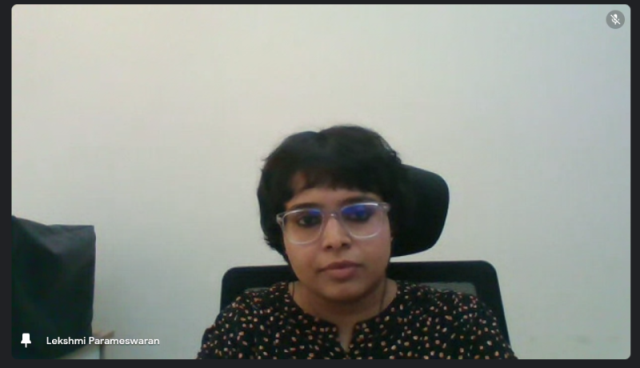
Lekshmi Parameswaran: When we are talking about demographic dividend, why are we not speaking about gender dividend?
Lalitha Kumaramangalam: What is the gender dividend that women have in this country? We are still woefully behind men. Unless girl children and women are given equal opportunities, how will we access that dividend? First, a girl has to be allowed to be born; second, she has to be given equal nutrition – both of which she doesn’t get in many places in this country; third, she has to be given education; fourth, she needs the opportunity for skilling and training; and fifth, the opportunity to be allowed to use her talents. So, larger the family size, the burden of that family including childcare falls on women. I am talking about child rearing not just producing the child. The more children you have, the less time you have for yourselves. Even the working women have a very unfair burden of looking after the families. How many men in our country take their plates till the sink and wash them? The fact is that some women are also equally patriarchal. It takes a lot of education, awareness and making men understand that women’s economic contribution can be more in the growth of a country. For example, look at Bangladesh and Vietnam. The data from there will show you that it is women who work around sweat shops. They are quicker, more loyal etc. But even when they are the ones who go back home and take most of the burden of household work including child rearing. It is easy to say autonomy. But women have not been trained to think that way. They have not been trained to think about equality. Socio-cultural training given to women from the time they are born is still very skewed against the female gender.
Antul Teotia: During my practice I have observed that many females even from the rural areas who were not educated or empowered wanted to have contraception and they have asked for sterilization. But they were not allowed to because of social and family pressure. We need to work on overcoming the pressures faced by a woman. So, we should work on women empowerment and we should educate those families to listen to the wishes of the women. If we talk about females in cities, it is understandable that a female in a city is more educated and more exposed.
Lekshmi Parameswaran: There are states like Tamil Nadu that have a shadow ban on emergency contraceptives. Should we not have laws to counter such practices?
Antul Teotia: Yes, of course. It is not just Tamil Nadu but many states are banning emergency contraceptive pills. In my view, it should not be banned as it is an individual choice whether a woman wants to conceive a child or not. We should have a strong voice against this. Rather we should educate females and be more vocal about different types of contraception. There should be more awareness in females regarding this.
Lalitha Kumaramangalam: One of the reasons why there is a sort of unofficial ban on the emergency contraceptive pill is because basically it is a hormonal change that it brings about in the body. It forces a girl not to get pregnant. So, for the health of any woman, it is better to teach her to practice safe sex. It is possible that Tamil Nadu may have felt that the use of emergency contraceptive is far higher than what it should be.
Antul Teotia: I feel accidental pregnancy is much worse than the imbalance of regular cycle.
Kuldeep Ratnoo: I request Dr Sabine Kapasito put forth her points. Dr Sabine has worked in several countries for international organisations. She has worked with “Medicins Sans Fontieres” in the poorest of countries torn apart by war and violence.
Dr Sabine Kapasi: I am a gynaecologist and IVF specialist. I would like to target my question to Lalitha
Kumaramangalam ma’am. You have worked in NCW for years. IVF has become a multi-billion dollar industry with 21 per cent of the women in the fertility age group going for at least one IVF consultation. What are your thoughts on how an industry is booming for the very reason that the law is aiming to curb?
Lalitha Kumaramangalam: The IVF industry is both good and bad. One of the reasons for the IVF industry is the pressure, the socio-cultural pressure on women to have a child. Women are often looked at as vessels to have children. It is an unconscious bias that often forces women to come to IVF consultants. Also, in the IVF industry, there are lot of things that are done under the table. We know that there is sex selection that goes on. It is almost impossible to prove it as it is a billion-dollar industry. And money can cover up many many sins. I am sorry to be so blunt about this.
Dr Sabine Kapasi: I agree with you. But I would like to give an example of a case of mine. I had a case about five years ago. At that time, authorities were cracking down on sex determination in clinics. A very well-off family wanted PGD to be utilised for sex determination and the facility is available only in government labs. I did not touch the case because of ethical issues. The couple had frozen embryos and they took it to Dubai to ensure that only male embryo was implanted. The number of such cases has increased thereafter. So, isn’t the whole issue about patriarchal male choices that we are giving people through any means possible?
Lalitha Kumaramangalam: Patriarchy is mostly in the mind-set. People are brought up believing that women have a certain role to play and they have boundaries. Patriarchy will take centuries to go. The worst thing you can tell a woman is that she is infertile. And here, the number of women telling this to other women is mind boggling. You must talk to the younger women about this. Especially in rural areas where girls are taught that it is necessary to get married, otherwise there is no point in being a woman. It is a part of social fabric. Even families put pressure on the daughters. Most of the rape cases in India happen within the families. So, yes, there is enormous pressure on women to have not just children but to bear male children. But unless, we all get together and fight this, you can’t say that population control is not needed. For me, the most important reason for population control is sustainable life on this earth. Nature has its own way of ensuring that there is a certain level of population control. Here, we are using medicine and science to even overturn that.
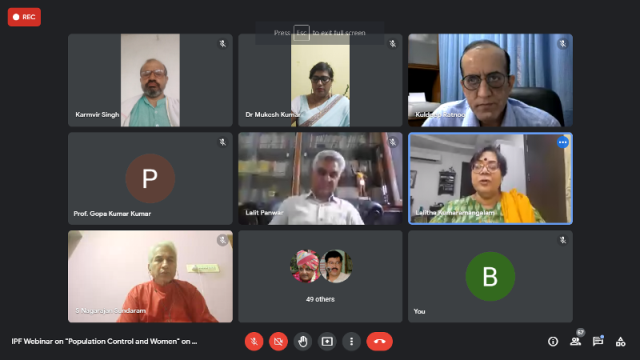
Brig Jeewan Rajpurohit: We ourselves are responsible for the patriarchy in society. Our ancient Indian culture did not say so. This enslavement we have undergone over the last 800 years is one of the possible reasons and it is we alone who can come out of it. One way to do is to continuously talk about it through writings and discussions.
Prof Gopa Kumar: Is it not high time for us to have a relook at the population policy and let the central government, state governments and panchayat institutions take equal responsibility along with NGOs to ensure a better and effective implementation measures? I also want to caution that the electoral politics has much to do with population. We are a young demography. In states like Kerala, the churches have come forward to fight the population decline in their community. They have said that if couples have more than four children, they will give subsidies and look after their families. You cannot sideline the political aspect of it. And as you know, the delimitation of constituencies will give more LokSabha seats for those states which have done poorly in population planning.
Nagarajan Sundaram: I would like to make a few observations with regard to population. By 1800, the population of the world was around 100 crore. By 2000s, it had gone up to 700crore. The population growth has happened in the last 200 years and the major contributors in this are China and India. Resources are not shared equally by people across the world. America is consuming 40 per cent of the resources with five per cent of the population. Even in India, people in cities are consuming more. I agree that child production is more in lower strata of society which lives in poverty.
Dr Kuldeep Ratnoo: There is an interesting comparison. If we see population growth of Pakistan till 1971, which had East Pakistan and West Pakistan, the growth rate is quite high. And then, Bangladesh came into being. Initially, the birth rate of Bangladesh was very high, then slowly it started going down. But Pakistan is still maintaining a high birth rate even though they have reduced from seven children per couple to four. We see that there is a huge difference between West Pakistan and the earlier East Pakistan which is now Bangladesh. It is an interesting study for everyone as to why Pakistan is still living in a medieval era where having more children is considered good. Some impact of thatmindsetis seen in the people of India and that is troubling the demographic balance. This is why it has also become a political issue. The most important factor in addressing this issue is providing education and employment opportunities to women. This will help them have more say in when they want to get married, when they want to have children and what size should their families be.
Nagarajan Sundaram: It is education which will empower the people because women have been employed in this country for too long, especially in the agricultural sector.
Dr Kapasi: I have worked in around 33 countries globally and most of them are in crisis regionsbecause I work with MSF and UN. I have seen countries like Rwanda picking up high fertility rate even with good education just becauseincrease in population at that time was necessary after the genocide. Similarly, the worst economic phase in Russia had the highest fertility rates because the death of children was more. I think putting socio-politics aside for a moment, a lot of it depends on the resources of a nation. The Southern continent started increasing its population only when it started having more resources. But today, people are consuming more. More than education, it is about decision-making. Even when women are working, they still don’t have that power. Women do not have the agency to decide whether they want a child or not. We need to give women agency across the country and across the globe. A lot of countries have done that. Today, the RwandanParliament has 73 per cent women and the country is booming financially.
Irfan Khan: Last week in the Parliament, the Minister of State for Health did mention that the Indian government is not looking at any population control policy. Are the population control policies helping women or are they detrimental to them?
Lalitha Kumaramangalam: No policy is always good or always bad. In the short-term, there may be problems that women will have to face. What may be coercive to one person may be a blessing to another. Women who are forced to have children over and over again, without having any say in the matter, for them population control may come as a blessing in disguise. Like I said, there is no one size fits all solution for a country like India.

Dr Mazhar Asif: Nowhere in the world is religion correlated with everything as it happens in India. It is unfortunate. Please don’t correlate family planning with religion. This is purely a social problem. It is nowhere written in the Quran that family planning is banned. Laptops, computer, technology, travelling in planes etc. are not mentioned yet we do all these things. Quran only tells a man to be good with his family. It does not mention anything about the number of kids one should have. It isstrictly a social issue. The second issue I want to raise is that we often fail to differentiate between religion and the follower of a particular religion. Islam is different and a Muslim is different. We need to look at these angles and raise social awareness. Quran needs to be understood and not just read out.
Dr Bharat Ratnu: Does age of marriage influence the population growth? There are various health issues that are arising due to age of marriage being delayed.
Dr Kuldeep Ratnoo: There are issues when conceiving at a later stage especially in mid 40s etc. But if it is the early or late 20s, it should not be a problem.
Pankaj Gurjar: Female foeticides continue to be a problem and the dropout rates of girls are more in schools. Are there any effective campaigns or social measures to ensure that girls get their rights?
Dr Teotia: We should not constrict this debate to just age. In rural areas, girls are getting married at the ages of 14-16. So, making rules is not a solution. What matters is to make boys and girls educated, to make sex education compulsory in government schools. Private schools have started doing this but in government schools, there is no sex education. We should empower females and give them the right to decide.
Sanjiv Kumar Pandey: For the population explosion in our country, one more reason is there – illegal migrants. It is a socio-political issue and we should have some strict rules for that.
Dr Kaushal Panwar: We don’t talk about issues related to health in our families. Because of this, a woman is forced to keep giving births in the hope of having a male child. Many times, this even results in the death of women. We need to get into the root cause of problems and address that. We cannot keep dismissing it as a social issue. The reason for drop out rates being more is because the background is weak. Every person in the family is forced to work and the girls are left with no time to study. Till the time, girls are not educated, awareness will not reach them.
Dr Kuldeep Ratnoo: Society did not have a lot of healthcare facilities before. If we see the average lifespan during the time of independence, it was around 30 years. Now that has reached 60-65 years. Earlier, the families were big in size as people were not sure as to how many of their children will survive. The next reason for big families is that they wanted more hands for agricultural labour or their family run businesses. This thought process is there even today. Also, a major reason for dropout rates among girls is that there is a small kid to be taken care of in the family. The mothers go to the field and the responsibility of taking care of that baby falls on the girl child because of which she is forced to leave her education mid-way.
But now we have seen a country like China being able to stop at least 40 crore births thereby creating more job opportunities and better environment for its population. We couldn’t do it and it was our mistake. With awareness, it is true that there has been a decline in the population. The policies of certain states which have stipulated that people with more than two kids cannot fight elections or will not be eligible for government jobs have contributed to the arrest in population growth to some extent. The difference due to this measure was seen in all communities. Also, with girls doing well in several fields when given the opportunity, people have started feeling that girls are capable of taking forward the family name and legacy. There has been a positive difference. But even now in few states where there is widespread poverty, illegal immigration etc., there is a need to bring in some form of population control laws. Women bear the majority of burden and it is important to empower the women and give them the choice. Only then can we progress in the right direction. As stated by Dr Kausal Panwar, people have started wearing masks for the fear of law and we need to do something similar in population control too.
I thank everyone for taking the time out and being part of this discussion. We had an insightful and healthy discussion on the topic.
Thank you!